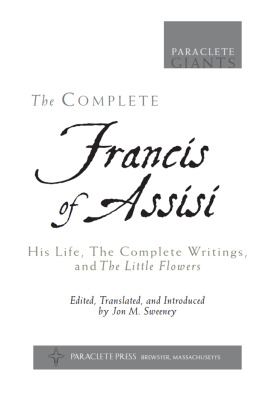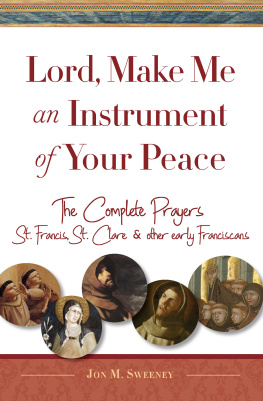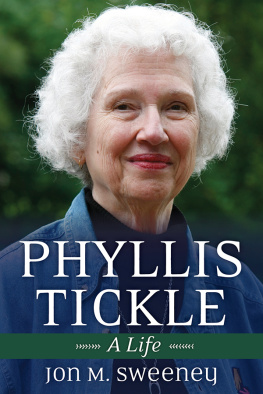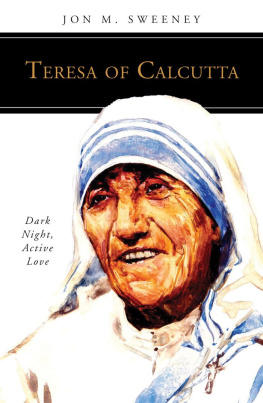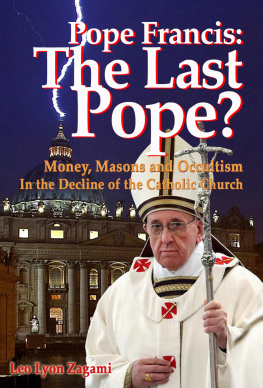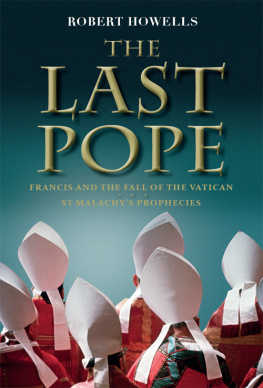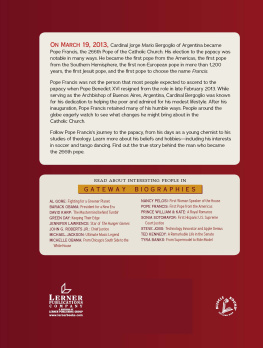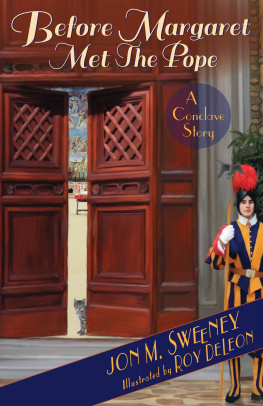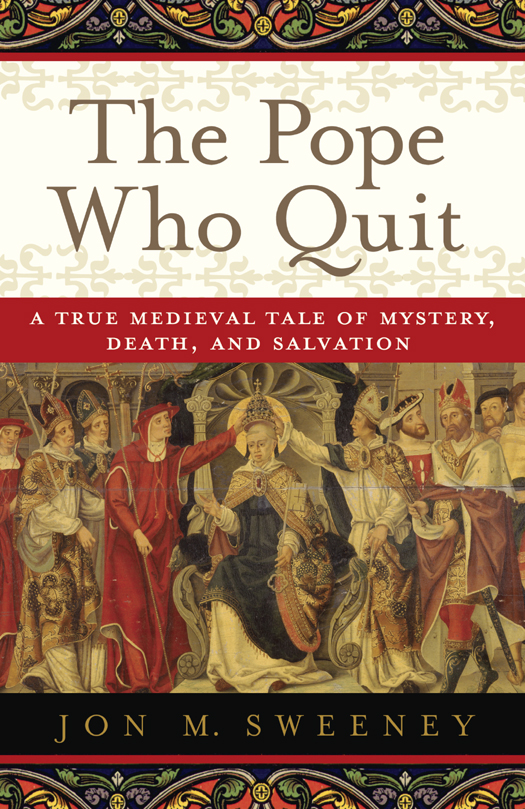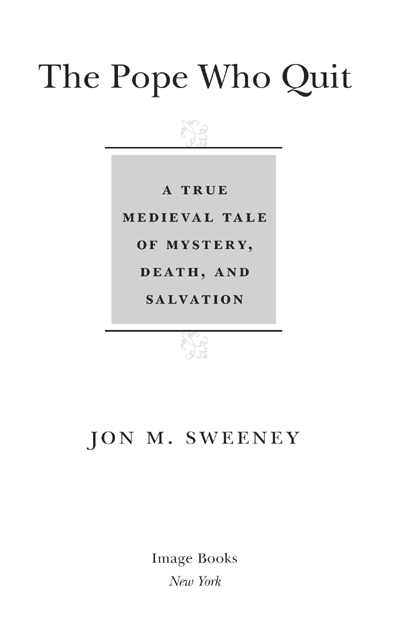
Copyright 2012 by Jon M. Sweeney
All rights reserved.
Published in the United States by Image Books, an imprint of the Crown Publishing Group, a division of Random House, Inc., New York.
www.crownpublishing.com
IMAGE and the Image colophon are registered trademarks of Random House, Inc.
Library of Congress Cataloging-in-Publication Data
Sweeney, Jon M., 1967
The Pope who quit : a true medieval tale of mystery, death, and salvation / Jon M. Sweeney.1st ed.
Includes bibliographical references.
1. Celestine V, Pope, 12151296. 2. PopesBiography.
3. PapacyHistoryTo 1309. I. Title.
BX1252.S94 2011
282.092dc22
[B]
2011014808
eISBN: 978-0-385-53188-7
Cover design by Rebecca Lown
Cover art: Runion des Muses Nationaux/Art Resource, NY
v3.1
In memory of
Violet San Romani Grundman
19162010

CONTENTS
PART I
WHEN THE UNEXPECTED HAPPENED
PART II
PETER OF MORRONE, 120993
PART III
TURBULENT TIMES
PART IV
THE PASSION AND THE PITY, 129496

TIME LINE OF KEY EVENTS
CA . 120910 Peter Angelerio is born in a small village in Molise, the most remote region of Italy.
1230 After spending three years as a monk at Santa Maria of Faifula, Peter leaves to become a hermit in the mountains.
123144 He founds a new religious order on and around Mount Morrone, in the Abruzzo region of southern Italy; this order will become known as the Celestine Hermits half a century later.
CA . 1240 CA . 1290 Little is known about Peters daily doings for these nearly fifty years.
1281 Benedict Gaetani is made a cardinal by Pope Martin IV.
A PRIL 1292 Pope Nicholas IV dies in Rome. Twelve cardinals assemble to elect the next pope. They remain stalemated for twenty-seven months.
M ARCH 1294 Charles II, king of Naples, offers a list of names to the cardinals. These are rejected.
J UNE 1294 The cardinals reassemble in Perugia. Peter writes a letter of apocalyptic foreboding to Latino Malabranca Orsini, dean of the Sacred College.
J ULY 5, 1294 Malabranca receives Peters letter and is inspired to offer up the hermits name as the next supreme pontiff.
A UGUST 29, 1294 Peter takes the angelic name Celestine V and is crowned in the basilica of Santa Maria of Collemaggio in LAquila. He remains within the Kingdom of Naples throughout his papacy at the urging of Charles II.
N OVEMBER 1294 Celestine creates a wooden hut in the papal apartments in Castle Nuovo, preferring to live humbly in the midst of splendor. He attempts, but fails, to put a triad of cardinals in charge of most papal duties.
D ECEMBER 13, 1294 Celestine abdicates with Cardinal Gaetanis help.
C HRISTMAS E VE 1294 Gaetani is elected Pope Boniface VIII.
C HRISTMASTIDE 1294 Boniface VIII orders Peter Celestine found and imprisoned.
M AY 19, 1296 Peter dies in Castle Fumone, near Anagni.
CA . 131012 In his elaborate allegory of the afterlife, Dante places Peter, not in Hell itself, but just outside its gates.
M ARCH 5, 1313 Clement V canonizes Saint Celestine V from the new papal home in Avignon, France.
No man save One, since Adam, has been wholly good.
Not one has been wholly bad.
F REDERICK ROLFE

PROLOGUE
Toward the close of the Middle Ages, in 1285, there lived three men whose lives would intersect and forever change history. Each was a man of power. Each was stubborn. Each was skilled at the life and work to which he seemed destined from birth.
The most important of the three and the central figure of this book is Peter Morrone. His surname comes from the mountain that he called home for most of his life. Peter was a monk and the founder of a religious order, and depending on whom you talk to, he was also a reformer, an instigator, a prophet, a coward, a fool, and a saint. He was very much a man swept up in history, and practically overnight he would be transformed from a humble hermit into Pope Celestine V, the most powerful man in the Catholic Church. He would also become the only man in history to walk away from his job, vacating the chair of St. Peter before he died.
If Peter Morrone lived today in the mountains outside of Rome or Los Angeles or New Delhi he might be a celebrity guru. From early in his life he was a man with a mountain, or montagna, and made his casa di montagna. If hed lived in the twenty-first century, talks to his fellow monks might be smuggled out of his enclave as digital audio files, soon to be packaged and sold by a big New York concern. He would emerge every now and then to speak privately with world leaders, who would also seek him out for personal counsel and, perhaps, photo opportunities. Peter was this sort of figure in his day.
But history rarely revolves around a single individual, and the story of Peter Morrone-cum-Celestine V is no exception. Although fellow monks and supporters would move in and out of Peters rather long life, there are two men in particular whose power and ambition would directly affect the life of this complex hermit, and, by extension, their actions would influence the world.
The first of these was Charles II of Anjou (12541309), supporter, corruptor, the ingratiating king of Naples. Having inherited his crown from a much more powerful father in January 1285, Charles II learned quickly how to use influential men, as well as to be of use to them. Charles would keep the hermit pope on a tight leash.
The second man who is central to our story is Cardinal Benedict Gaetani, one of the eleven cardinal-electors who chose Peter Morrone as pope. Born as Benedetto, son of Gaetani, into a prominent family in about 1235, he was a true Roman and the nephew of Pope Alexander IV (125461). Well educated from youth, he trained as a lawyer, was skilled in canon law, and was made a member of the curia at the age of twenty-nine. For the next thirty years Gaetani gained a reputation as a supremely competent papal legate who could represent the Holy See in confronting heresy and spiritual rebellion in places like England and France, asserting moral authority when heretical movements rose to the surface. He would become Celestine Vs trusted adviser and would help the hermit pope resign from officeperhaps conniving for his own self-interest because he would take the chair of St. Peter only eleven days later.
Celestine Vs abdication was the climax of a five-month reign, from July to December of 1294, during which time he served as Christs supreme representative on earth, and then quit. As we will see, nothing went well for anyone, except perhaps for Gaetani.
When a man is raised to the chair of St. Peter he is not elected for a certain term or period of time. He becomes pope for life. Yet throughout the 2,000-year history of the papacy Peter Morrone is the only man who has resigned and walked away.


